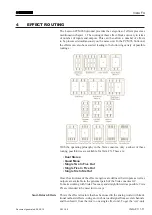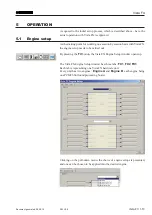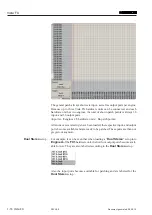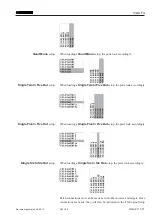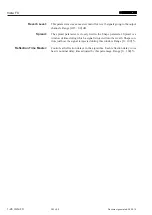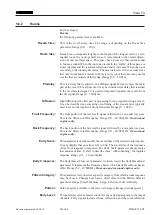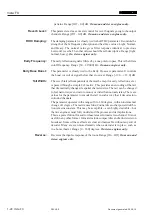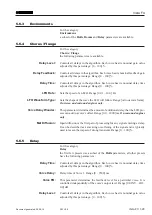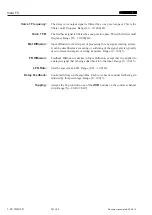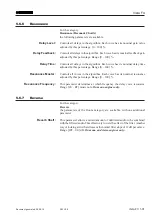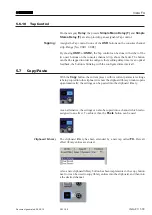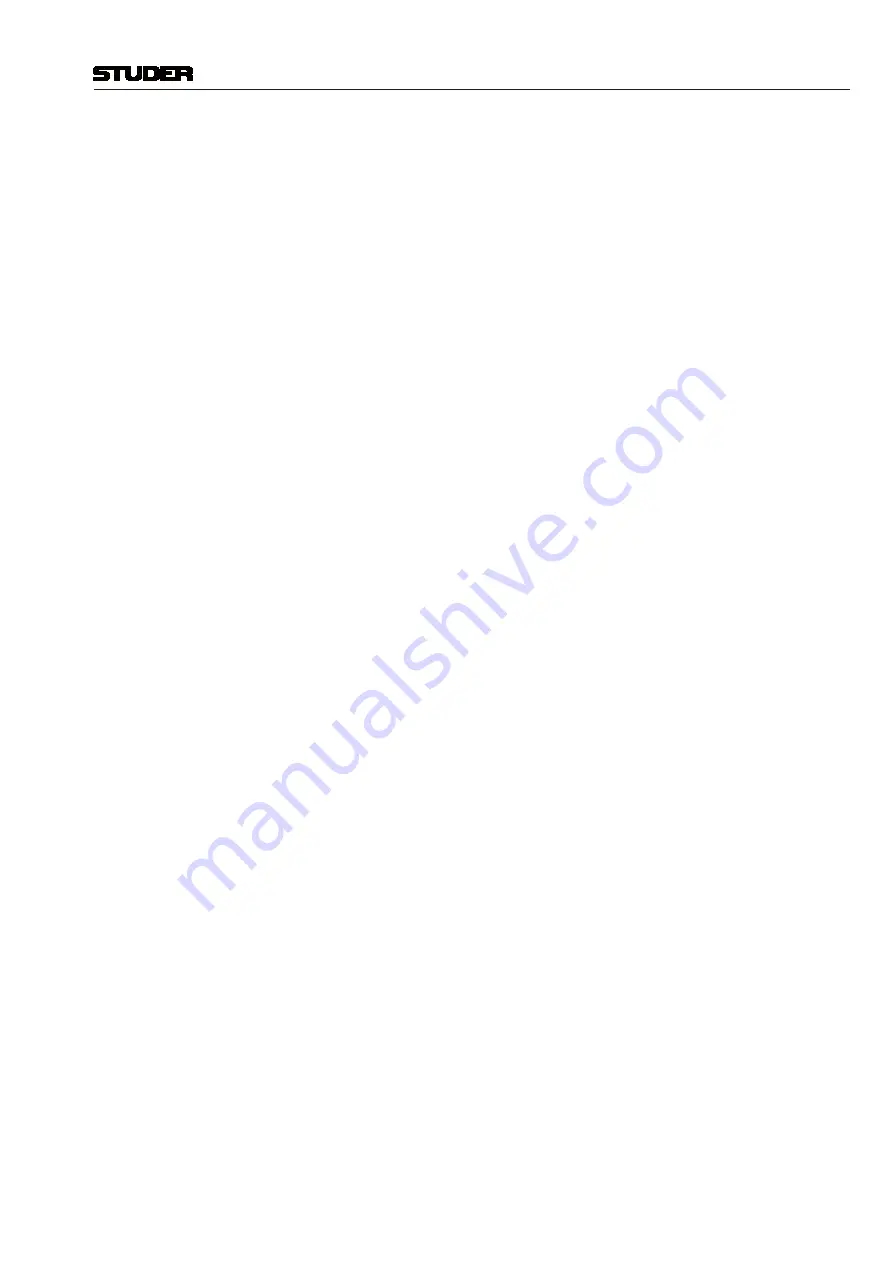
Vista FX
Vista FX 1-25
Document generated: 28.08.14
SW V4.9
Bass RT :
This parameter controls bass reverb time. It is closely associated with the Bass
Crossover parameter. BassRT applies to signal below the frequency described
by Bass Crossover. If BassRT is less than 1.0, then the low frequency part
of the reverb tail will be shorter than the midrange part. If BassRT is greater
than 1.0, then the low frequency part of the tail is longer. Range [0.25 .. 4]
multiplier.
Tail Width :
The reverb tail (all components of the reverb except for early reflections, etc.)
is passed through a simple 2x2 matrix. This provides an encoding of the tail
that dramatically changes its spatial characteristics. The tail can be changed
to feel narrower (even down to mono) or wider than normal stereo. There are
values for the parameter to encode the tail in such a way that it decodes into
surround channels.
The parameter operates in the range of 0 to 360 degrees, with an incremental
change of 1 degree. The matrix uses Sine/Cosine rules so that power distribu-
tion remains constant. This may be acceptible—even highly desirable—but
the mix engineer must fully understand the process and its implications.
This is a powerful tool for audio whose release format is two-channel. It is not
useful in any other format. Formats include compact disc and radio/television
broadcast. Some of these effects are clear and noticeable without any sort of
decoder. Many are even more dramatic when a decoder is in place, such as
in a home theater. Range [0 .. 360] degrees.
On stereo engines only.
Early Level :
This parameter acts as a master control for any early signals going to the output
channels. Early signals include echoes, reflections, and the room reflection
patterns. Range [Off .. 0.0] dB
Bass Crossover :
The Bass Crossover parameter is closely tied to the BassRT parameter. It
represents the frequency below which BassRT has an effect. Range [50 ..
10’000] Hz
RtHC Damping :
The damping parameter is closely tied to the RTHC parameter. It controls the
strength of the hi frequency absorption and has three values: Light, Normal,
and Heavy. The normal value gives filter response identical to previous
Lexicon® reverbs. The other values should be self-descriptive. Range [light,
normal, heavy]
Shape :
The Shape parameter is closely tied to the Spread parameter. Shape controls
how energy is injected into the reverberator. A low value means that sound
enters the reverb at the beginning of the spread window. A high value means
that most sound moves into the reverb at the end of the spread window. A
value somewhere in the middle means that sound enters the reverb evenly
across the spread window. Range [0 .. 64]
Room Size :
Room Size corresponds roughly to the length of the longest wall of a rect-
angular room. In a more general sense, it corresponds to the overall dimen-
sion of some mythical space. This space has a geometry that causes sound
to bounce around. When the room size is small, the “walls” of this space are
closer together and the resultant reflection density increases. When the room
size is large, that density decreases. The most natural reverbs use room sizes
that vary from about 24 meters to 45 meters or so, but there are many useful
reverbs that are outside of this range. Range [2.0 .. 80.0] m

